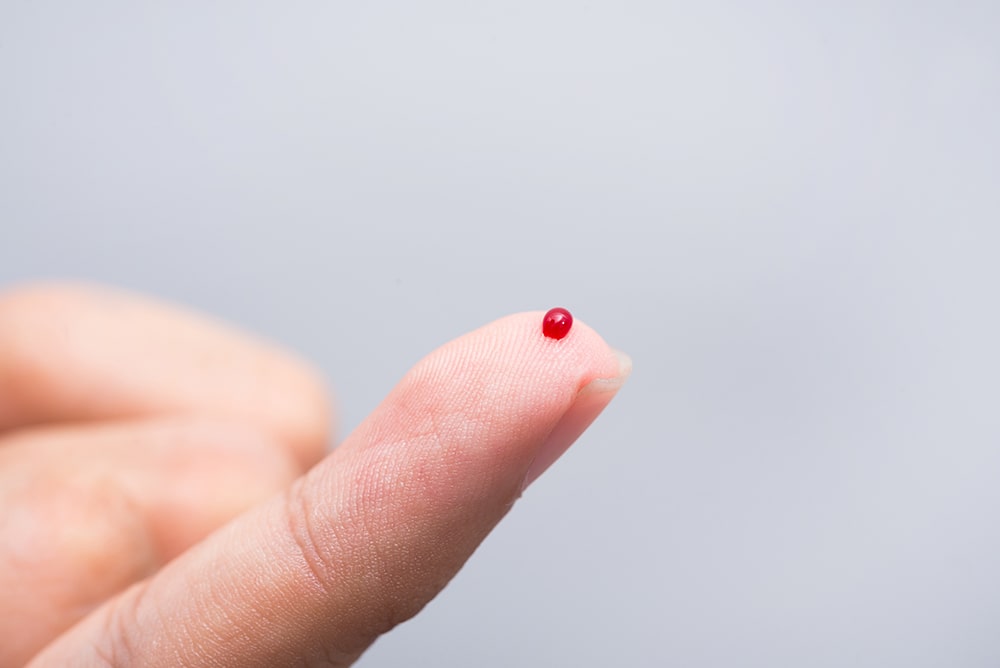Monitoring drug adherence in leukaemia
15 Mag 2023

Researchers develop a more comfortable and convenient method for monitoring drug adherence - using innovative portable devices that enable patients to collect dried blood samples at home.
A drug called imatinib mesylate has revolutionised the treatment of chronic myeloid leukaemia (CML), a type of blood cancer that affects both adults and children. The therapy works by blocking the action of the abnormal protein that drives the growth of cancer cells – helping to slow down the progression of the disease and stop it from reaching an advanced stage.
But recent studies have revealed considerable variability between patients in the plasma concentrations of imatinib mesylate – likely due to differences in drug metabolism, poor compliance, or interactions with other drugs. Achieving levels of 1000 ng/ml appears to improve the likelihood of a better therapeutic and molecular response, while above 3000 ng/ml is likely to increase the risk of unwanted side effects.
Due to the narrow therapeutic window for imatinib mesylate, therapeutic drug monitoring (TDM) plays an important role for dose optimisation, monitoring adherence, as well as identifying possible drug interactions for CML patients.
Dried blood samples
Traditionally, the measurement of imatinib mesylate and its metabolites has been performed through the analysis of plasma samples by liquid chromatography in specialist laboratories.
But using dried blood samples could offer an attractive alternative, especially in developing countries where the long-distance transportation of liquid biological samples from remote locations can be logistically challenging.
In a new study, published in the Journal of Pharmaceutical and Biomedical Analysis, researchers developed an assay to measure imatinib mesylate and its main metabolite from finger-stick blood microsamples.1
A simple and convenient approach
The researchers recruited 33 CML patients who were provided with portable blood microsampling devices for the self-collection of samples at home. After extraction and protein precipitation, dried blood samples were then analysed by liquid chromatography with tandem mass spectrometry (LC-MS/MS).
Interestingly, the team found that the estimated plasma concentrations of imatinib were not statistically different in the adherent and non-adherent groups – with a median of 789 ng/ml in the group with some level of non-adherence versus 1141.9 ng/ml in the group with adherence. They also showed that dried blood samples were stable for up to two weeks – both at room temperature and 45oC (to mimic tropical conditions).
The researchers used purified water generated from an ELGA PURELAB® laboratory water purification system for their experiments, minimising the risk of introducing contaminants that may affect their results.
A fully validated method
This study highlights the importance of developing a high-quality TDM assay for implementation across large geographical areas where the logistics of traditionally collected liquid samples is challenging and expensive. The new methodology was fully validated according to relevant guidelines with satisfactory performance for the determination of imatinib and its main metabolite. The major advantages of remote, home collection of dried blood samples include the comfort and convenience of the approach for patients. In addition, samples can be sent via standard mail to a central laboratory, avoiding the need for cold shipping or complicated logistics.
Why choose ELGA LabWater
ELGA LabWater has been a trusted name in pure and ultrapure water since 1937. We believe in giving you choice in how you use our water purification solutions, supported by excellent service and support.
Reference:
1. Krützmann ME, et al. Volumetric dried blood microsampling for monitoring imatinib mesylate therapy: Method development and clinical application in patients with chronic myeloid leukemia. J Pharm Biomed Anal. 2023 222:115108. doi: 10.1016/j.jpba.2022.115108.
Dr Alison Halliday
After completing an undergraduate degree in Biochemistry & Genetics at Sheffield University, Alison was awarded a PhD in Human Molecular Genetics at the University of Newcastle. She carried out five years as a Senior Postdoctoral Research Fellow at UCL, investigating the genes involved in childhood obesity syndrome. Moving into science communications, she spent ten years at Cancer Research UK engaging the public about the charity’s work. She now specialises in writing about research across the life sciences, medicine and health.
